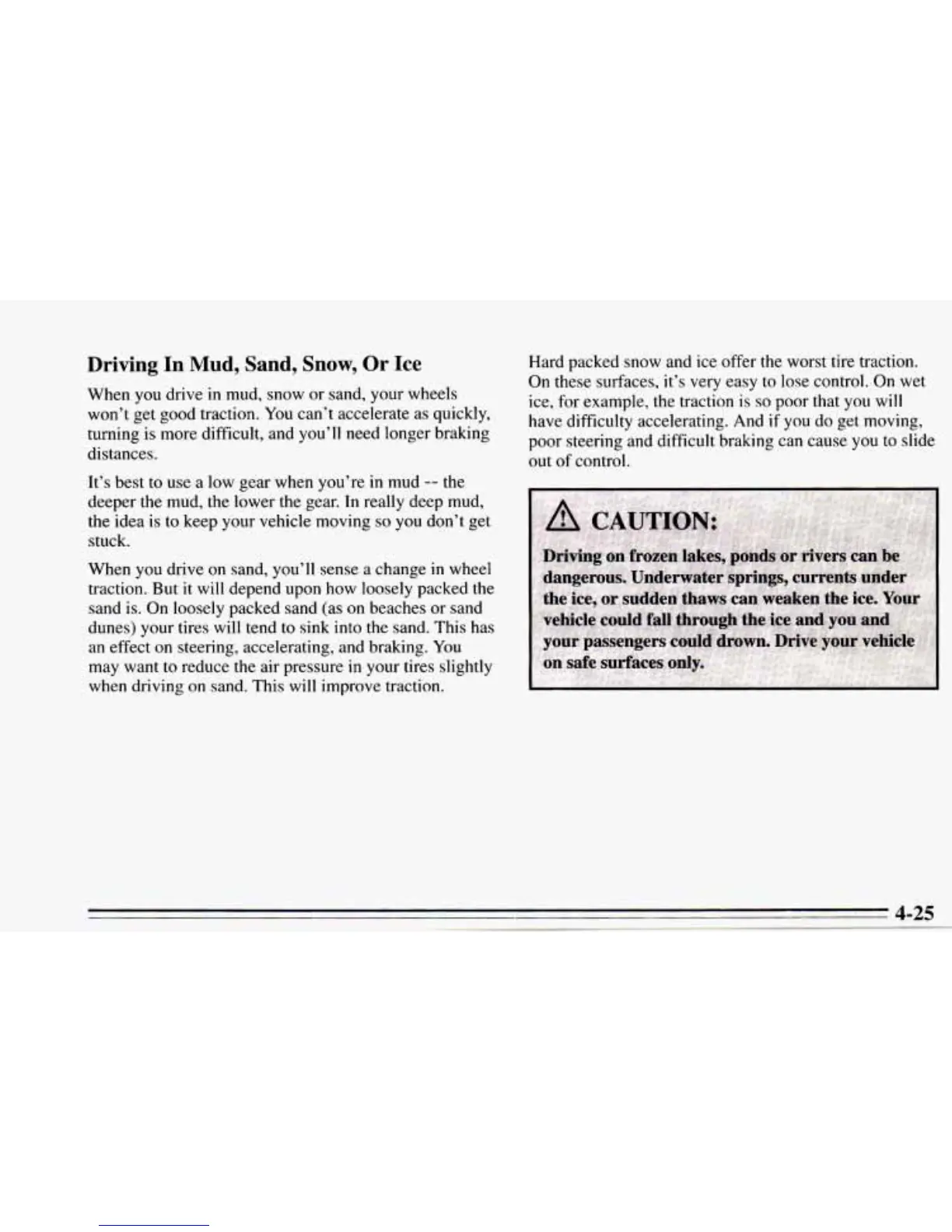Driving
In
Mud,
Sand,
Snow,
Or
Ice
When you drive
in
mud, snow or sand, your wheels
won’t get good traction. You can’t accelerate as quickly,
turning
is
more difficult, and you’ll need longer braking
distances.
It’s best to use a low gear when you’re
in
mud -- the
deeper the mud, the lower the gear. In really deep mud,
the idea is to keep your vehicle moving
so
you don’t get
stuck.
When you drive on sand, you’ll sense
a
change
in
wheel
traction. But
it
will
depend upon how loosely packed the
sand is. On loosely packed sand (as on beaches or sand
dunes) your tires will tend to sink into the sand. This has
an effect on steering, accelerating, and braking. You
may want to reduce the air pressure
in
your tires slightly
when driving on sand. This will improve traction.
Hard packed snow and ice offer the worst tire traction.
On these surfaces, it’s very easy to lose control. On wet
ice, for example, the traction is
so poor
that
you
will
have difficulty accelerating. And
if
you do get moving,
poor steering and difficult braking can cause you to slide
out of control.
